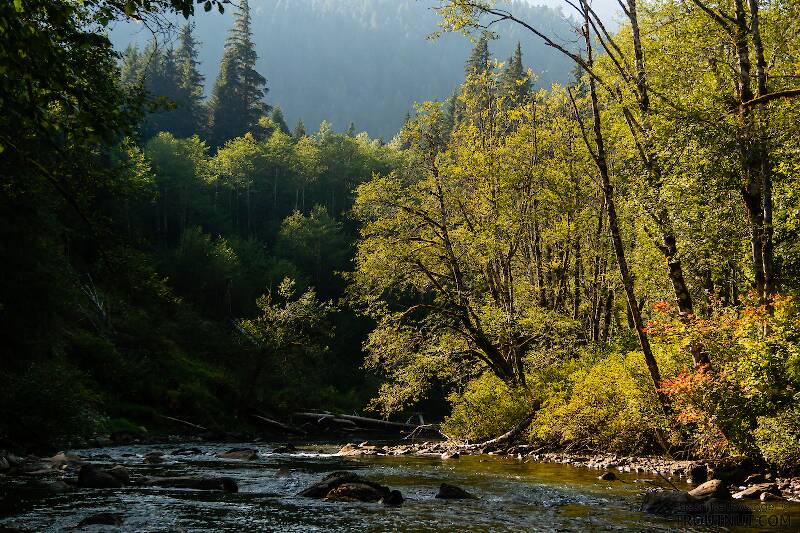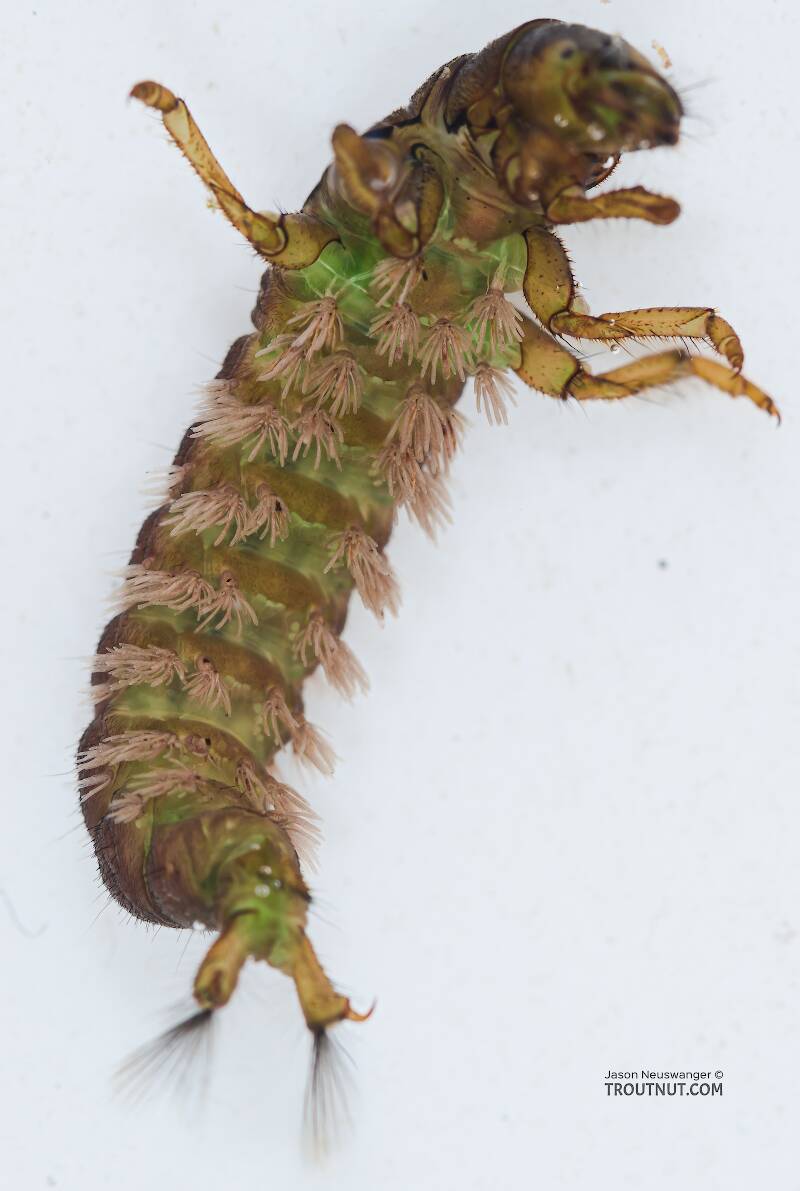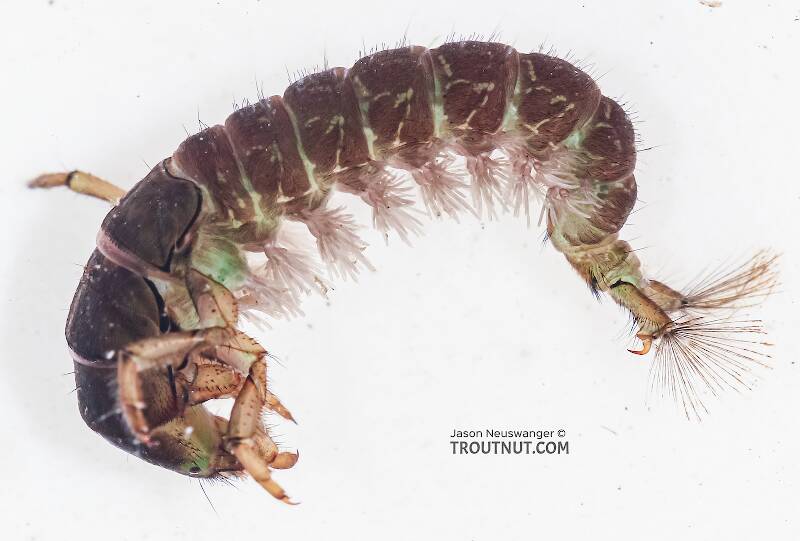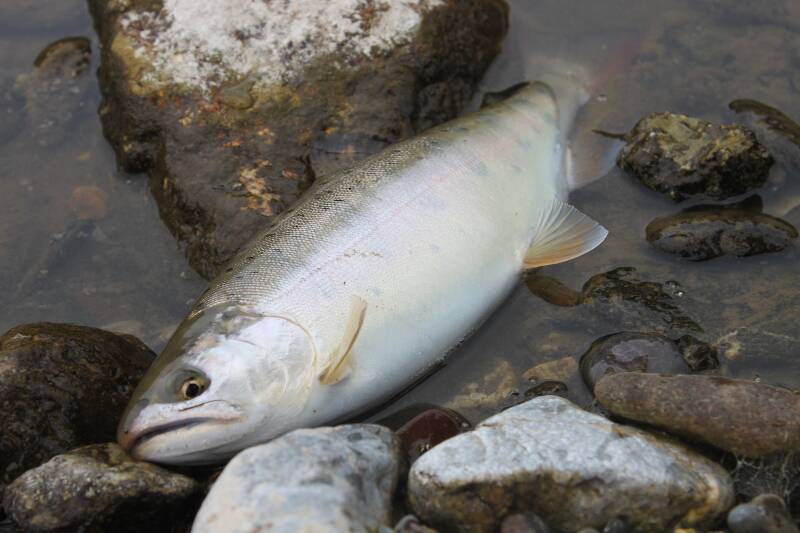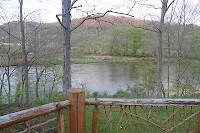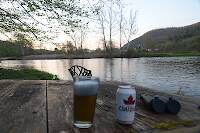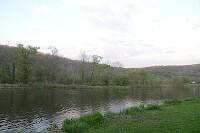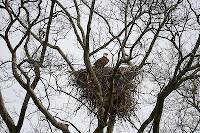
Salmonflies
Pteronarcys californica
The giant Salmonflies of the Western mountains are legendary for their proclivity to elicit consistent dry-fly action and ferocious strikes.
Featured on the forum

This specimen keys to the Epeorus albertae group of species. Of the five species in that group, the two known in Washington state are Epeorus albertae and Epeorus dulciana. Of the two, albertae has been collected in vastly more locations in Washington than dulciana, suggesting it is far more common. On that basis alone I'm tentatively putting this nymph in albertae, with the large caveat that there's no real information to rule out dulciana.

Troutnut is a project started in 2003 by salmonid ecologist Jason "Troutnut" Neuswanger to help anglers and
fly tyers unabashedly embrace the entomological side of the sport. Learn more about Troutnut or
support the project for an enhanced experience here.
This topic is about the Caddisfly Genus Arctopsyche
Arctopsyche grandis, the western species, is by far the most important in this genus. It produces excellent fishable hatches.Example specimens
Epeorus on Jul 2, 2014July 2nd, 2014, 11:12 am EDT
A while ago there was some discussion of this bug in Colorado. I first came across this beast in early July 2011 on the Eagle River, just downstream of Edwards, Co. Met him again this week on the Eagle. It's quite the blast - big bugs and big trout. Especially the ones rising with abandon in the fast water in the middle of the day.
Funny thing is we don't seem to see these guys most years. The commonality between 2011 and this year is an extended runoff leading to cold and high - though clear water in early July. I wonder if they normally hatch during the peak of the runoff when no one is on the water.
I remember people commenting about these caddis allegedly being in parts of Colorado. The hatches the last two days on the Eagle and what I saw in 2011 would add some level of credence to that belief.
A size 10 (on a Partridge L3A) sponge body caddis with a dark gray body, and a size 10 Lafontaine sparkle emerger with a gray body and a clear shroud were the ticket.
Funny thing is we don't seem to see these guys most years. The commonality between 2011 and this year is an extended runoff leading to cold and high - though clear water in early July. I wonder if they normally hatch during the peak of the runoff when no one is on the water.
I remember people commenting about these caddis allegedly being in parts of Colorado. The hatches the last two days on the Eagle and what I saw in 2011 would add some level of credence to that belief.
A size 10 (on a Partridge L3A) sponge body caddis with a dark gray body, and a size 10 Lafontaine sparkle emerger with a gray body and a clear shroud were the ticket.
Creno on Jul 2, 2014July 2nd, 2014, 12:17 pm EDT
This genus is common throughout Colorado in clear, cobble streams between 6,000 - 10,000 ft altitude. Emergence can occur thoughout most of the snow free months depending on elevation. There are two species, A. grandis and A. inermis, in some areas of the state - I know inermis occur in the Eagle, Poudre and Laramie drainages. You need to closely examine males to determine which is which. Good characters to separate the females and larvae are not available yet. I have also seen the adults around in the day but they can be very abundant after dark.
Epeorus on Jul 3, 2014July 3rd, 2014, 7:23 am EDT
Thanks.
So how I tell the difference between a male and female?
And is there enough behavioral differences between A. Grandis and A. Inermis to make a difference?
So how I tell the difference between a male and female?
And is there enough behavioral differences between A. Grandis and A. Inermis to make a difference?
Creno on Jul 3, 2014July 3rd, 2014, 9:08 am EDT
Other than genitalia (male: complex with many parts; female: simple, tubular) female Arctopsyche have "skating" mid tibia, males don't. The tibia (the long leg segment before the 5, short, apical tarsal segments)is broadly flattened. The female uses the flattened tibia/tarsa to skate or row across the water surface. Many Hydropsychidae genera have this sexual dimorphism.
I don't know anything about behavioral differences. Since the 1960s A. inermis was considered a synomym of A. grandis (although the males are distinctly different) and therefore all behavioral/lifehistory studies since the 1960s did not distinguish between the two. Only recently the availability of DNA has clarified that the two are distinct species.
It does appear that, where they occur in the same water body (e.g. Eagle, Poudre and maybe the Laramie) A.inermis may extend further downstream than A. grandis. I don't know if this has been positively confirmed yet.
I don't know anything about behavioral differences. Since the 1960s A. inermis was considered a synomym of A. grandis (although the males are distinctly different) and therefore all behavioral/lifehistory studies since the 1960s did not distinguish between the two. Only recently the availability of DNA has clarified that the two are distinct species.
It does appear that, where they occur in the same water body (e.g. Eagle, Poudre and maybe the Laramie) A.inermis may extend further downstream than A. grandis. I don't know if this has been positively confirmed yet.
Entoman on Jul 6, 2014July 6th, 2014, 7:39 am EDT
Thanks for the topic, Ash - and thanks for the valuable input, Dave! I have moved the topic so it is directly linked to the taxon for future reference.
My experience with these big critters is fairly limited high up in the Sierras as I've only seen them where the fish aren't much bigger than the bug.:) However, I've had excellent fishing on bigger coastal rivers in CA & OR where these large green hydropsychids were involved. They went unidentified below family for many years in angling circles. They can occur much lower in these waters and offer excellent fishing for good trout.
My experience with these big critters is fairly limited high up in the Sierras as I've only seen them where the fish aren't much bigger than the bug.:) However, I've had excellent fishing on bigger coastal rivers in CA & OR where these large green hydropsychids were involved. They went unidentified below family for many years in angling circles. They can occur much lower in these waters and offer excellent fishing for good trout.
"It's not that I find fishing so important, it's just that I find all other endeavors of Man equally unimportant... And not nearly as much fun!" Robert Traver, Anatomy of a Fisherman
Creno on Jul 6, 2014July 6th, 2014, 3:10 pm EDT
In CA/OR you are dealing with 4-5 species of Arctopsychinae in fishable streams. They will range from 100ft altitude to headwaters. You probably cannot tell them apart except with close examination. There are also a couple Rhyacophila in that part of the world that are as big and could be readily confused without examination.
Entoman on Jul 6, 2014July 6th, 2014, 7:04 pm EDT
That's good to know Dave, thanks. I assumed the High Sierra ones I've seen were californica but they sure could have been Parapsyche, I suppose. Pretty sure the coastal ones are grandis though as the hatches are pretty prolific. Of course that's assuming Parapsyche species don't hatch in great numbers on a consistent basis. Since it would take someone with a substantial knowledge of their taxonomy to tell them apart, perhaps it's a case of one species getting all the credit for the other's fecundity in angler circles? Wouldn't be the first time...:)
My samples from those years have long since disappeared but I don't think I confused them with the other grandis*. I remember the long antennae and hydropsychid wing shape.
*Reader note - there are two giant green caddis out West that are fairly common and with the same name "grandis." This can be confusing but quite within the bounds of nomenclature as they are from different families. One is a hydropsychid the other a rhyacophilid. As Creno points out the adults can be difficult to tell apart if one doesn't know what to look for but the larvae are quite different in appearance.
My samples from those years have long since disappeared but I don't think I confused them with the other grandis*. I remember the long antennae and hydropsychid wing shape.
*Reader note - there are two giant green caddis out West that are fairly common and with the same name "grandis." This can be confusing but quite within the bounds of nomenclature as they are from different families. One is a hydropsychid the other a rhyacophilid. As Creno points out the adults can be difficult to tell apart if one doesn't know what to look for but the larvae are quite different in appearance.
"It's not that I find fishing so important, it's just that I find all other endeavors of Man equally unimportant... And not nearly as much fun!" Robert Traver, Anatomy of a Fisherman
Quick Reply
Related Discussions
Topic
Replies
Last Reply
1
May 17, 2016
by Bnorikane
by Bnorikane
6
May 20, 2013
by Flymonster
by Flymonster
8
Jul 17, 2016
by Steps25
by Steps25
4
Sep 4, 2012
by Entoman
by Entoman
2
Aug 2, 2019
by Crepuscular
by Crepuscular

